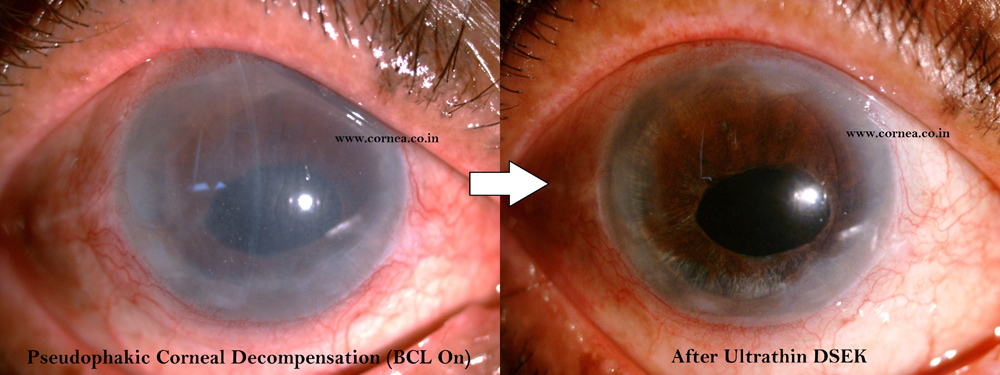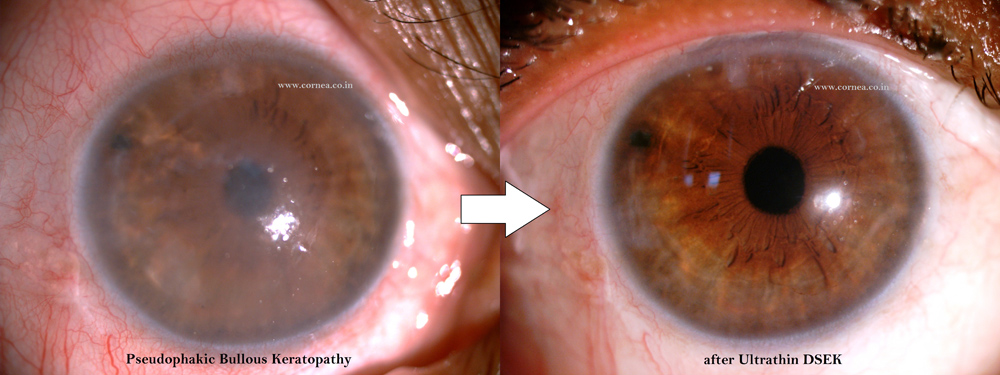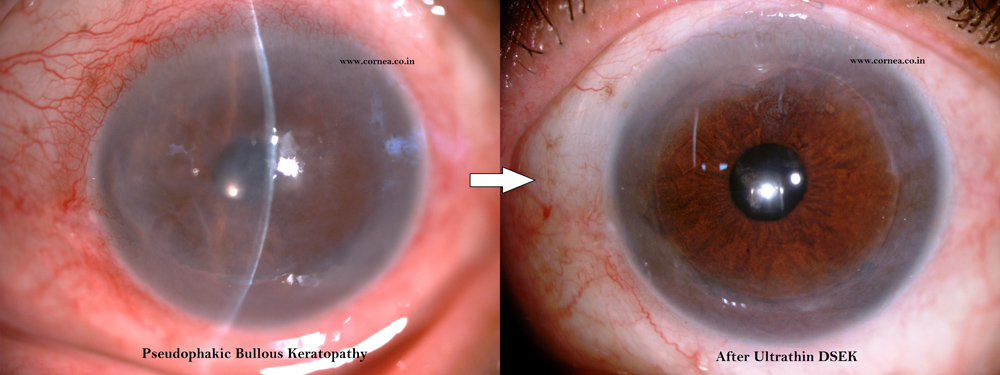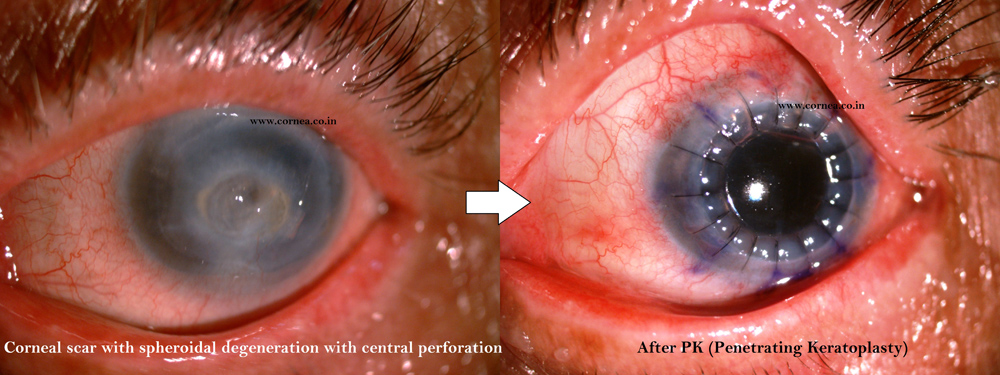1.What is DSEK?
Descemet’s Membrane Endothelial Keratoplasty (DSEK) is the revolutionary procedure that has nearly replaced the traditional corneal transplant (PK) for endothelial diseases.
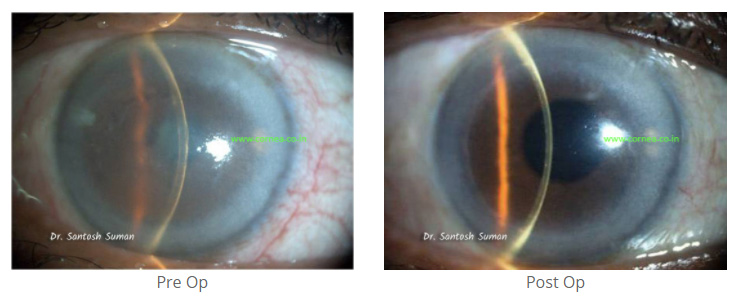
2. How is it different from PK (Penetrating Keratoplasty)?
In the case of endothelial diseases, only the innermost layer (endothelium) is defective, therefore another healthy layer needs not be changed. In DSEK, only the diseased endothelium is removed and is replaced by few layers of donor cornea DSEK doesn’t require stitches. The tissue sticks to the eye by the use of an air-bubble.
There are several advantages of DSEK over PK. There are no stitches over the cornea in DSEK, so there are no suture-related astigmatism, suture-related rejection, and suture-related infection. Also, there is no cut-over cornea leaving a stronger and smoother cornea and healing is also faster.
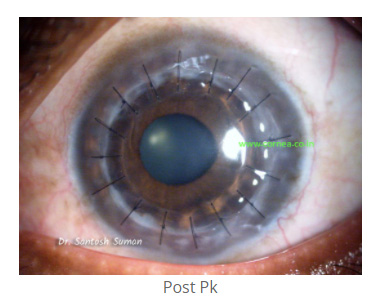
3. What are the cases where DSEK needs to be done ?
“Fuch’s endothelial dystrophy” and” Pseudophakic Bullous Keratopathy” (after cataract surgery) are the main indications for DSEK.
4. Why DSEK is not as popular as PK?
DSEK is a relatively newer procedure and old-generation cornea surgeons may not be comfortable performing DSEK. DSEK is surgically more challenging and needs more expertise. With more and more cornea surgeons learning DSEK, it is becoming popular now.
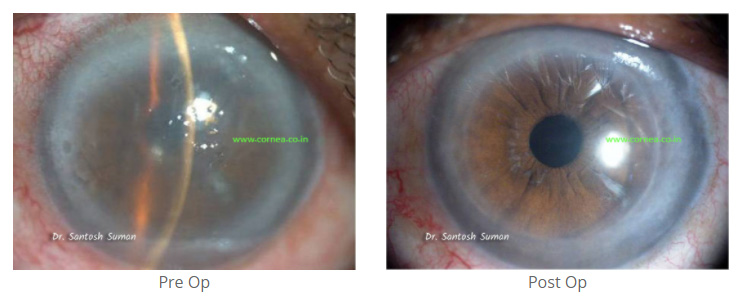
5. What special care do I need to take after DSEK surgery?
You may be instructed to lie down supine for few hours after surgery. The layer of donor cornea is not fixed with stitches in DSEK. They are kept in its place with the help of an air bubble inside the eye, thus strict positioning is essential to keep the air bubble in its place.
6. What is “re-bubbling” after DSEK surgery?
Sometimes donor cornea may get displaced despite all efforts. These patients need re-bubbling i.e, reinjection of air bubbles to bring the donor cornea in its place.
